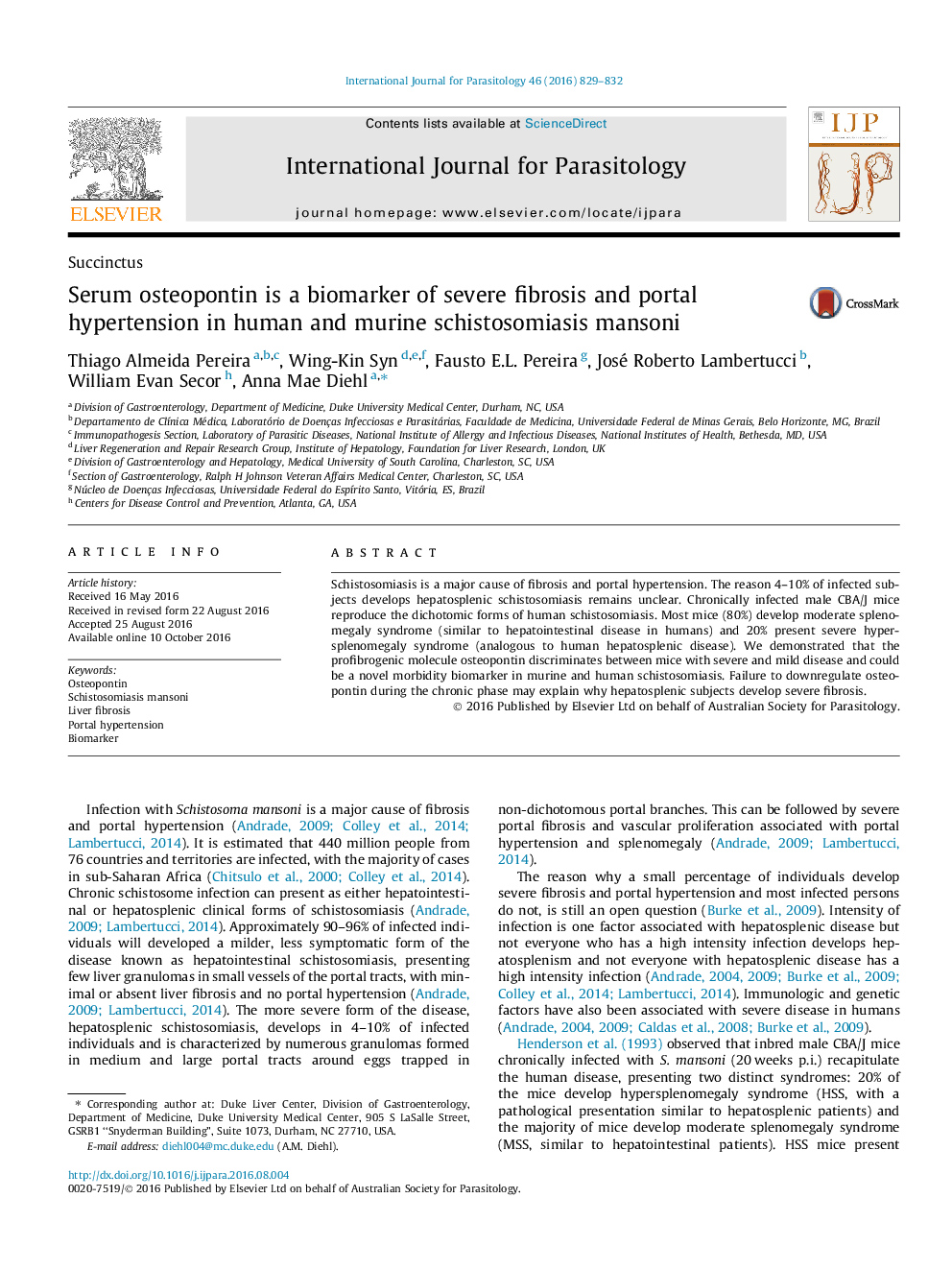| کد مقاله | کد نشریه | سال انتشار | مقاله انگلیسی | نسخه تمام متن |
|---|---|---|---|---|
| 5541312 | 1553723 | 2016 | 4 صفحه PDF | دانلود رایگان |

- Osteopontin distinguishes severe from mild schistosomiasis in mice and humans.
- Osteopontin is a novel morbidity biomarker in human and murine schistosomiasis.
- Failure to modulate osteopontin expression may contribute to severe fibrosis.
Schistosomiasis is a major cause of fibrosis and portal hypertension. The reason 4-10% of infected subjects develops hepatosplenic schistosomiasis remains unclear. Chronically infected male CBA/J mice reproduce the dichotomic forms of human schistosomiasis. Most mice (80%) develop moderate splenomegaly syndrome (similar to hepatointestinal disease in humans) and 20% present severe hypersplenomegaly syndrome (analogous to human hepatosplenic disease). We demonstrated that the profibrogenic molecule osteopontin discriminates between mice with severe and mild disease and could be a novel morbidity biomarker in murine and human schistosomiasis. Failure to downregulate osteopontin during the chronic phase may explain why hepatosplenic subjects develop severe fibrosis.
79
Journal: International Journal for Parasitology - Volume 46, Issues 13â14, December 2016, Pages 829-832